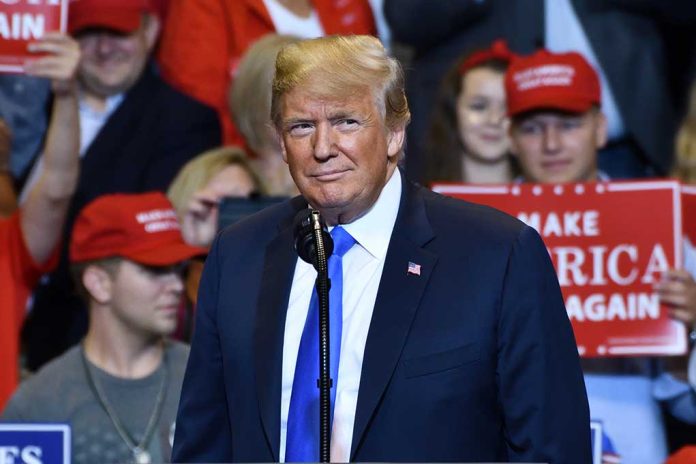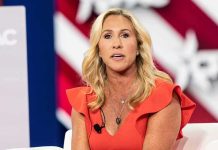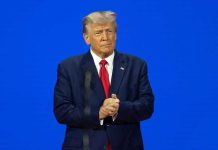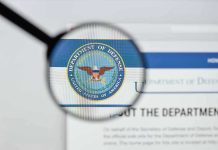
President Trump’s appointment of U.S. Space Force General Michael Guetlein to lead the revolutionary $175 billion Golden Dome missile defense initiative signals a new era of American military dominance that will transform global security dynamics through unprecedented space-based defense capabilities.
Key Takeaways
- President Trump has appointed Gen. Michael Guetlein, Vice Chief of Space Operations at the U.S. Space Force, to lead the ambitious Golden Dome missile defense project.
- The Golden Dome initiative will deploy land-, sea-, air-, and space-based interceptors to defend America against hypersonic, ballistic, and cruise missiles.
- Trump estimates the project will cost $175 billion and be completed within three years, though some experts project costs could reach into the trillions.
- Canada has expressed interest in joining the defense shield, expanding its protective coverage beyond U.S. borders.
- Initial funding of $25 billion is expected to be included in an upcoming congressional reconciliation bill.
America’s Next-Generation Defense Shield Takes Shape
In a decisive move to strengthen America’s national security, President Trump has appointed General Michael Guetlein of the U.S. Space Force to lead the ambitious Golden Dome missile defense initiative. The announcement, supported by Defense Secretary Pete Hegseth, represents a significant step forward in establishing what will become the world’s most comprehensive missile defense system. Gen. Guetlein, currently serving as Vice Chief of Space Operations at the U.S. Space Force, brings extensive experience in missile defense operations that makes him uniquely qualified to oversee this critical national security project.
“No one is more qualified for the job,” said President Trump during the announcement ceremony, highlighting Guetlein’s expertise and leadership capabilities.
📸: On May 20, 2025, President Donald Trump announced the path forward for the “Golden Dome” missile defense shield, a project aimed at protecting the U.S. from long-range missile strikes, including ballistic, hypersonic, and cruise missiles.
The announcement, made alongside… pic.twitter.com/JYw1wemVRc
— Kagan.Dunlap (@Kagan_M_Dunlap) May 20, 2025
An Ambitious Shield for American Security
The Golden Dome project represents a modern evolution of President Reagan’s 1980s Strategic Defense Initiative, now considered achievable due to significant technological advancements. Originally called “Iron Dome for America,” the project was renamed to distinguish it from Israel’s Iron Dome system. The comprehensive shield will integrate land-, sea-, air-, and space-based interceptors designed to protect the United States from hypersonic, ballistic, and advanced cruise missiles launched from anywhere in the world, including space. This multi-layered defensive approach aims to create an impenetrable barrier against potential threats from adversarial nations.
“I promised the American people that I would build a cutting-edge missile defence shield to protect our homeland from the threat of foreign missile attack,” stated President Trump, emphasizing his commitment to American security.
The scope of the Golden Dome has already expanded beyond initial expectations, with Canada expressing interest in joining the initiative. This international partnership would significantly enlarge the area requiring protection but would also distribute costs and strengthen North American defense cooperation. The President has indicated that other allied nations may eventually join the program, creating a broader international shield against missile threats while reinforcing America’s position as a global security leader.
Funding Challenges and Timeline
President Trump has estimated the Golden Dome project will cost approximately $175 billion and be completed within three years – by the end of his current term. This timeline reflects the administration’s sense of urgency regarding national security threats. However, cost projections vary widely, with the Congressional Budget Office estimating that the Space-Based Interceptor portion alone could reach $542 billion. Some senators, including Tim Sheehy, believe the total cost could eventually reach trillions, considerably higher than the administration’s estimate.
“It’s amazing how easy this one is to fund. Some funding is tough and some is easy. When we say we’re going to save everyone’s lives in a crazy world, it seems to be very easy to get,” explained President Trump regarding the funding approach.
The first funding allocation of $25 billion is expected to be included in an upcoming congressional reconciliation bill, with Trump expressing confidence in securing the necessary appropriations. This initial funding will kickstart development while the administration works to secure additional resources for the project’s completion. Despite budget concerns, the President has chosen what he described as a “high” version of the plan, emphasizing his unwillingness to compromise on American security.
Technological Capabilities and Strategic Impact
The Golden Dome represents a technological quantum leap in missile defense capabilities. It will feature advanced space-based sensors and interceptors capable of detecting and neutralizing threats launched from anywhere on Earth or from space itself. This comprehensive system aims to neutralize the growing hypersonic missile threats from nations like China and Russia while establishing American dominance in the militarization of space. The project will incorporate cutting-edge technologies that were unavailable during previous missile defense initiatives.
“Once fully constructed, the Golden Dome will be capable of intercepting missiles even if they are launched from other sides of the world and even if they’re launched from space. We will have the best system ever built,” declared President Trump, highlighting the system’s unprecedented capabilities.
Beyond strengthening national security, the Golden Dome initiative is expected to create thousands of high-tech jobs and boost economic activity in various states. The President has mentioned potential economic benefits for multiple regions, although specific companies involved have not yet been publicly identified. Some Democrats have raised questions about potential conflicts of interest regarding private sector involvement, particularly speculating about Elon Musk’s possible participation through SpaceX, though the administration has not confirmed any such arrangements.













